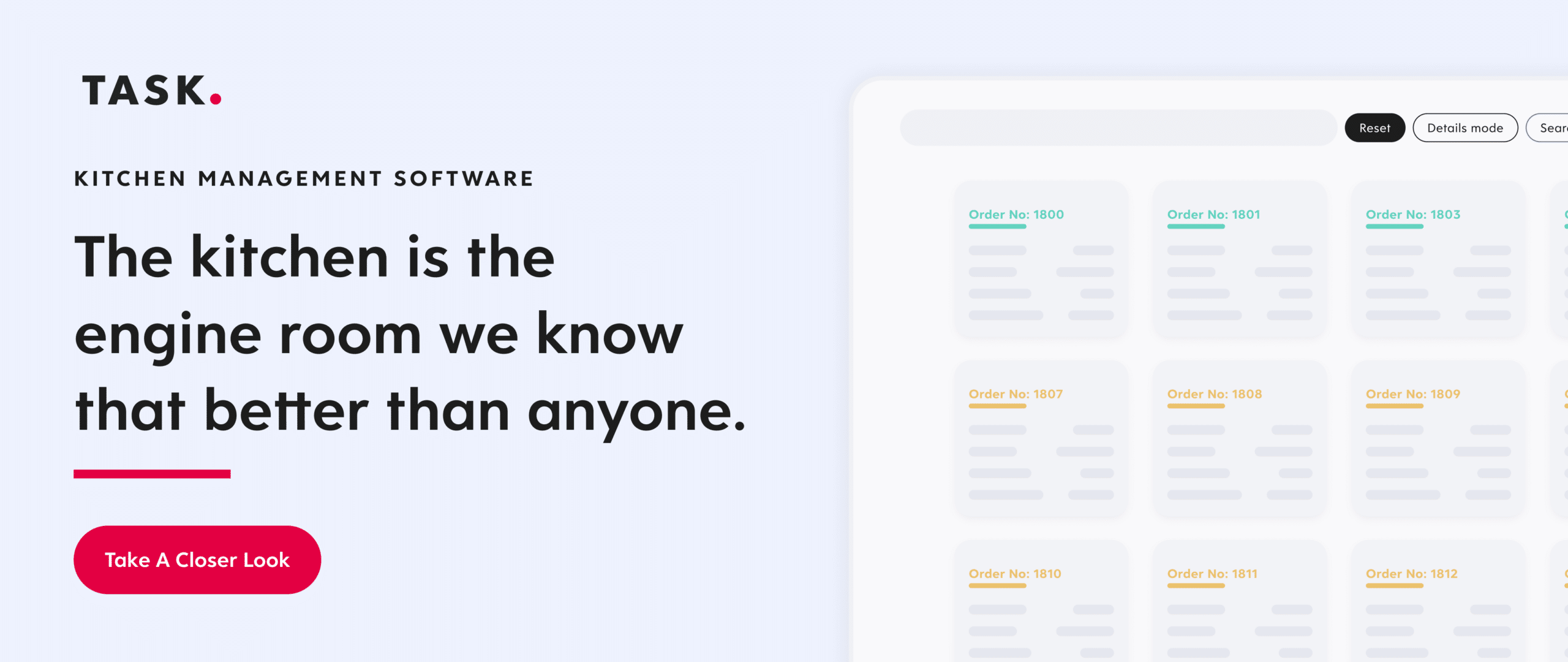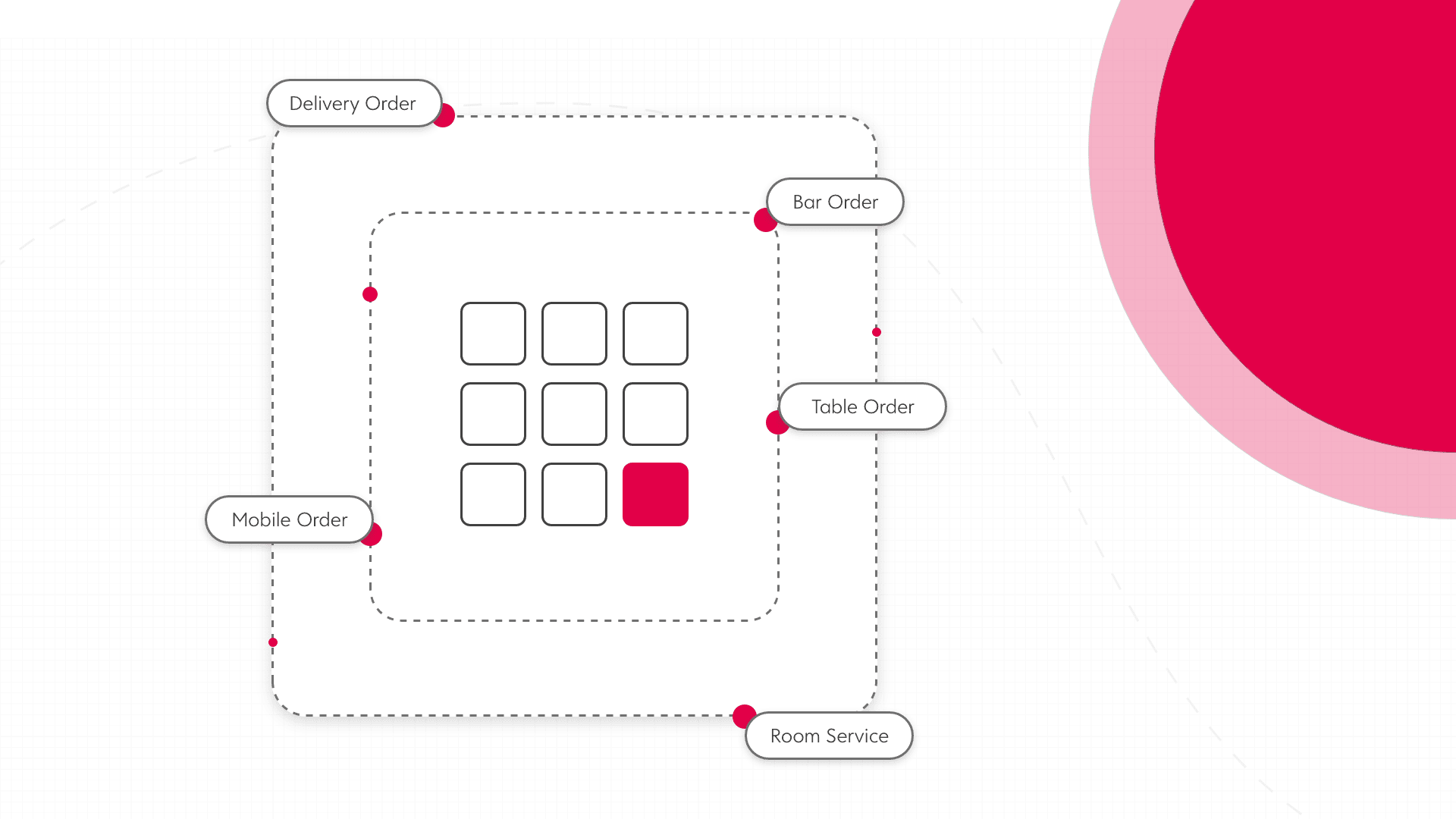It’s no secret that the restaurant industry is growing faster than ever. Since March 2020, online ordering has increased by 124% in the U.S. – paving the way for the country’s quick-service food industry to reach.
To keep up with rapid demand spikes alongside troubling labor shortages, it’s no wonder that so many restaurant owners are turning to smart kitchen management software. From tracking food orders to managing inventory to managing employee time and pay, integrated POS technology is the future for hospitality businesses that want to stay ahead.
Here’s all you need to know about what kitchen management software can offer to your restaurant – and how to choose a provider that’s right for your brand.
What Is Restaurant Kitchen Management Software?
Think of all the checkpoints involved with running a smooth restaurant operation. Designing menus, ordering stock, predicting peak hours, scheduling staff, operating an efficient back-of-house system, tracking orders… the list goes on and on, and any hospitality owner will tell you that every detail is important when it comes to delivering great service while still increasing the bottom line.
Kitchen management software is an integrated technology system that tracks every line of operations, communications, and data – all to help restaurants become more efficient. Imagine automatically ordering stock when ingredients are running low. Or having sensors installed to avoid refrigeration checks and food safety forms every morning.
Kitchen management software is a streamlined, all-encompassing system to make the day-to-day easier, more accurate, and more productive across every facet of running a busy hospitality business.
Kitchens are known as chaotic, especially during mealtime rushes. The busier the period, the more likely physical order tickets will get lost, ingredients will run out, and communication between back-of-house and front-of-house staff will break down.
A restaurant kitchen management system can process a dinner rush in a way that a staff member simply cannot – taking in every piece of information and directing the most efficient way forward.
Key Features of Kitchen Management Software
Kitchen management software is built to improve productivity, accuracy, and data-based planning in a busy restaurant. The key features include:
- Tracking food orders
- Inventory management
- Optimize foodservice operations
- Collecting and analyzing data
- Planning menus
- Managing employees
Streamline Your Kitchen Workflow
Instead of relying on staff to manage every aspect of timing in a kitchen to prepare big orders, kitchen management software automatically suggests the most efficient cooking procedure for speedy delivery.
High-tech POS software allows kitchen staff to see incoming orders across multiple sources in a single dashboard that prioritizes orders based on cooking time, requested delivery time from customers, and the size of the order. Taking out the human error and kitchen printers from your kitchen can transform your order receiving process – thus improving order accuracy and boosting profit margins at the same time.
Optimizing kitchen workflow is essential for restaurants that experience busy rushes. Better organization, based on data and smart technology, will help reduce lost orders, wait times, and miscommunications – bringing better service to your customers with less hassle from your restaurant kitchen staff.
Track Performance and Increase Revenue
Data analytics really is the future for businesses in industries across the globe. In today’s restaurants, not only is it important to know as much as possible about your customers, their preferences, and their ordering habits, but also about how your own operations are and how well they cater to consumer needs.
Menu management technology collects, stores, and even analyzes data in real-time. That means information about your restaurant’s productivity, sales, order history, and wait time is available throughout service – allowing managers to adjust processes or even menus immediately.
Improve customer satisfaction and optimize restaurant operations based on accurate, all-encompassing data. Kitchen management systems help drive forward efficient changes for your business and transform it into a more profitable operation.
Crush It in Inventory Management
56% of restaurateurs cite that food is their biggest business cost. But at the same time, it’s predicted that restaurants in the U.S. also waste 22 to 33 billion pounds of food every year. It seems obvious that the best way to save food costs would be to manage waste better – but restaurants don’t always find the solution quite that straightforward.
Menu items sometimes call for ingredients with different shelf lives, or particular consumer interests rapidly change. In some cases, inventory loss happens in small, almost negligible quantities – one quart of sour milk at a time – until it snowballs into a large amount of waste. But if food accounts for 20-40% of revenue spent by restaurant businesses, throwing away food is essentially throwing away money.
To combat this problem and avoid that snowball effect, restaurant kitchen software can help track and predict future inventory with startling accuracy. By collecting data on every customer order placed, every stock delivery received, and every ingredient’s shelf life, smart POS technology can catalog your kitchen’s pantry better than even the greatest chefs.
With material and food shortages and delays affecting businesses around the globe, staying on top of stock levels is becoming even more difficult.
Menu management tools allow your restaurant software to automatically place stock orders and even give notifications if certain food items have become unavailable or changed in price can help manage a constantly changing food economy.
Inventory control is a crucial aspect of improving a business’ profitability. Restaurant kitchen technology can help tick up margins and optimize food preparation while also reducing food waste.
Optimize Your Menu for Maximum Profit
No restaurant is successful without a truly well-created menu. After all, your food needs to align with your brand, engage your customers, and stand out as unique.
Planning a menu that will improve sales requires considering ingredient and inventory availability, collecting data from customers, and assessing what current menu items perform best and worst.
Recipe management tools can show how well the current inventory levels might support a new recipe on the menu. This tool also allows you to determine allergen information and nutritional statistics for a particular recipe, as well as an accurate cost breakdown to inform menu pricing.
This level of information and assessment would take hours to complete manually, and still only provides a rough estimate for restaurant managers. Taking the guesswork out of the menu planning process through using recipe management software provides a more time-efficient alternative that makes cost comparison easy and accurate.
Customized To Your Restaurant Experience
Every restaurant has a unique kitchen system that works for its menu, its staff, and its brand. A small one-location pizza parlor will have vastly different needs than international restaurant chains with multiple brands under one umbrella.
That’s why, when choosing a software provider, it’s important to consider whether your technology will provide customization to your restaurant’s needs. Consider how you currently process online orders, organize your line cooks and kitchen team, and gather data.
From how touchpoints are designed to what communication channels are open – your technology provider should allow for a totally integrated system that facilitates staff productivity.
Effectively Manage Employees
The larger the restaurant business, the more employees to manage. From front-of-house servers and front-counter staff to back-of-house cooks, dishwashers, and sous chef, there can be immense challenges in keeping track of employee productivity.
Advanced technology can help save time for staff, and facilitate better communication. Kitchen management systems help facilitate and digitize every facet of a well-run restaurant kitchen – from kitchen sanitation to an automatically updated prep sheet.
Labor is consistently cited as one of the biggest costs of opening and maintaining a restaurant business, and recent talent shortages in the hospitality industry add a whole new dimension to the problem. Training new staff is often time-consuming, expensive, and may not ever pay off, with turnover rates often reaching 74.9% within the industry.
With intuitively designed software that provides clear instructions and simplified processes, kitchen management software makes training and integrating new employees far more time-effective.
Management software also automatically gathers data about operational productivity within the business, tracking employee productivity, staff schedules and hours, and training costs. The software also helps streamline the payroll process with integrated accounting capabilities.
Track Food Orders Like a Pro!
Gone are the days of printed order tickets. Instead, many restaurants are investing in POS hardware with real-time order tracking available on kitchen display systems. Kitchen management technology creates an easy-to-follow system that tracks orders from payment to delivery – and helps optimize food production in your restaurant kitchen.
Omnichannel integration means that orders coming from multiple platforms are all programmed into the same order-tracking system. Whether a delivery order has come from the front counter, mobile app, phone call, or third-party delivery service, it is organized for staff into a single network of dashboards. Automated tracking takes away the need to manually make decisions about cooking timing and back-of-house operations, as the system helps staff prepare orders with maximum efficiency.
Did you know that the average customer is willing to wait up to 40 minutes for their food to arrive at their doorstep? That level of service may have seemed ludicrous a few years ago, but heightened demands and steep industry competition have changed what customers expect.
Research shows that customers who place an online order with a restaurant will visit that restaurant 67% more frequently than those who don’t. A restaurant’s success relies on satisfying online customers – and that means cutting down waiting times and reducing overdelivering on wait expectations.
Tracking food orders isn’t just about time efficiency though. It also helps you communicate better with your customers. Using an integrated POS system allows customers to see the progress of their orders in real-time. If there are delays or problems at any point, the kitchen management software is able to iterate the problem and predict a solution to the customer immediately, keeping them informed and feeling in control.
Integrates Seamlessly With Your Current Tech Stack
Software that allows integration with your current technology systems, or provides an all-in-one service is the best choice to avoid friction during transition periods.
Kitchen management systems exist to make behind-the-scenes processes for kitchen staff and decision-making for managers easier, not more complicated. When choosing a technology provider, it’s important to consider what your current systems require from a kitchen display system, as well as the areas requiring better efficiency.
Full integration is key to connecting every point of your business operations into one easily accessible system that will help inform data-based decisions and improve kitchen productivity.
Improve Your Foodservice Operations
In an industry growing like never before, it’s important for restaurants to plan for future growth that increases efficiency and capacity for their business. 60% of U.S. consumers order delivery or takeout once a week – and that number shows no signs of slowing down.
The pandemic has truly heightened customer expectations, while global market changes have brought labor shortages and stock delays. To keep up with more competition, higher labor costs, and quicker delivery standards, restaurants need smart technology to boost internal productivity.
Kitchen management software allows restaurants to track orders with accuracy and efficiency, manage staff time, plan menus, and build data. Investing in the future is investing in technology to support growth.
To learn more about how a TASK kitchen management software system can be customized and integrated into your hospitality business, get in touch with our expert team.

